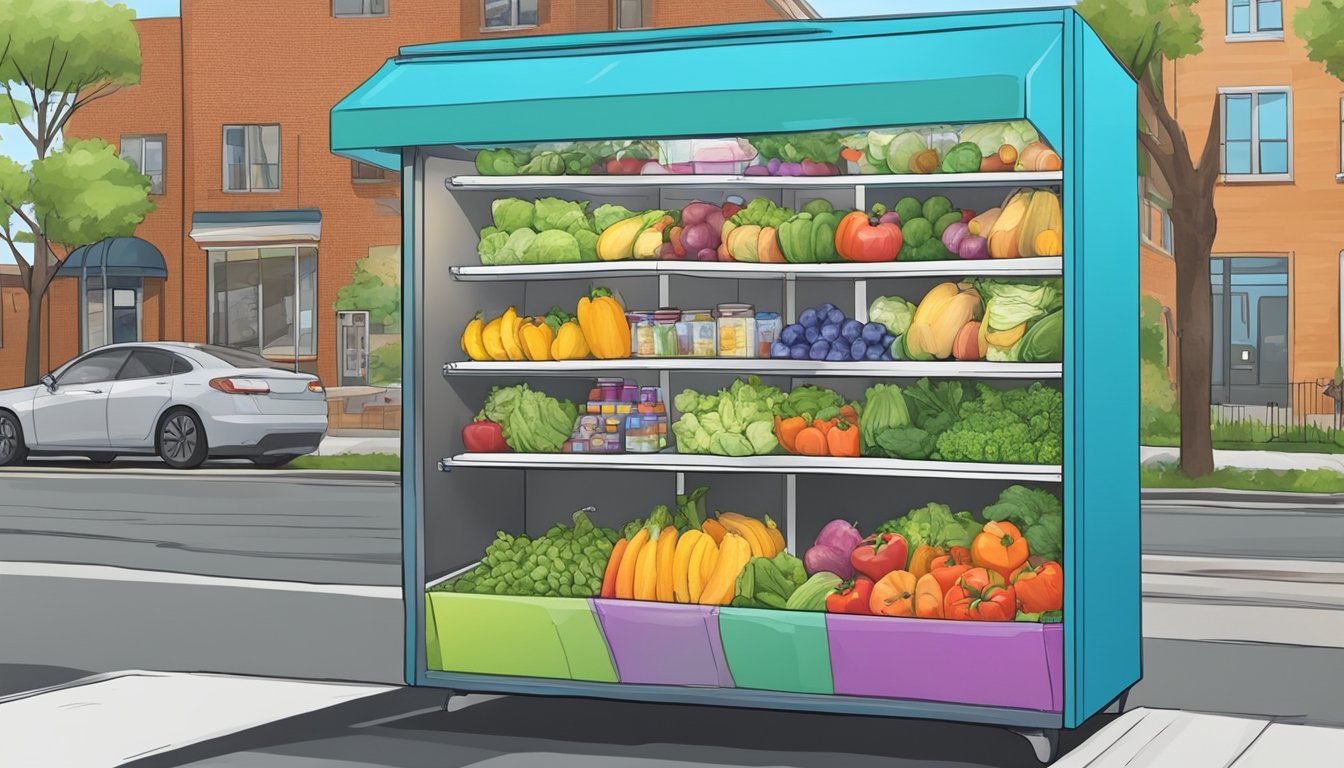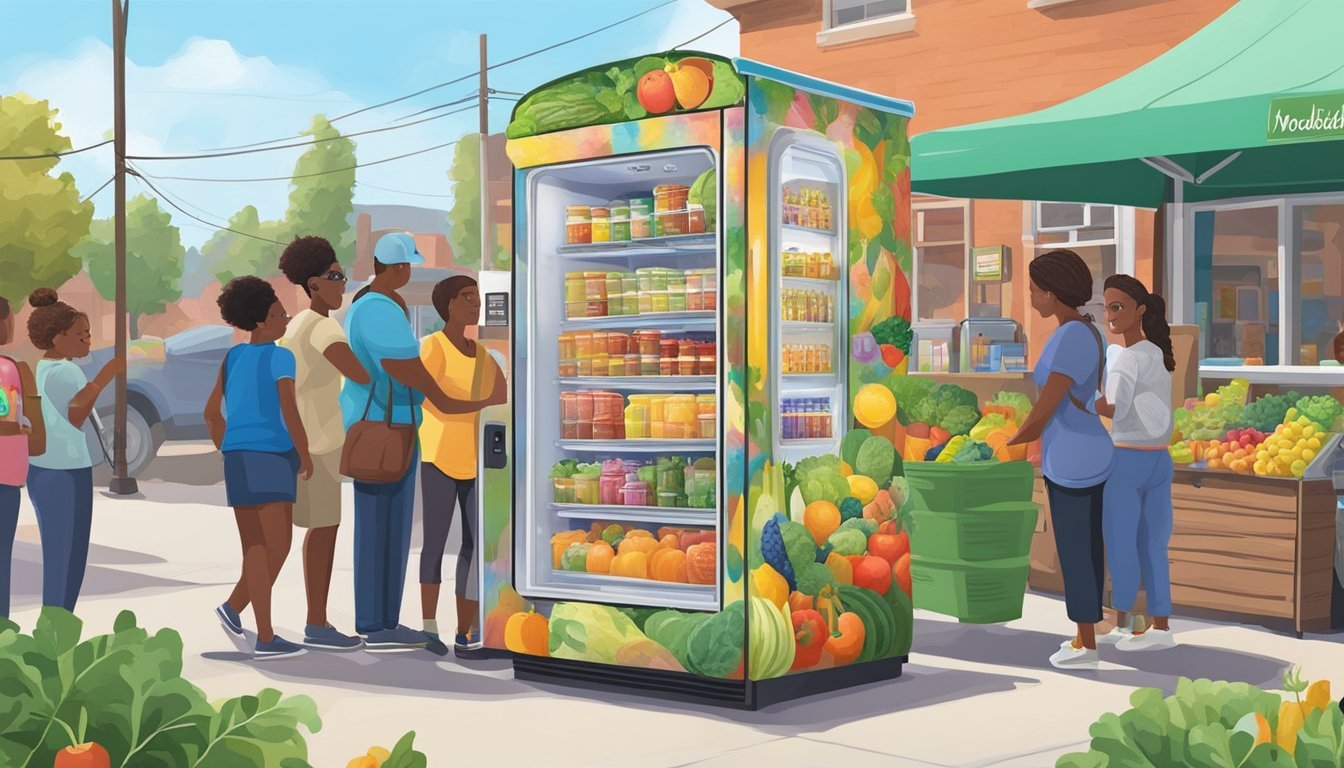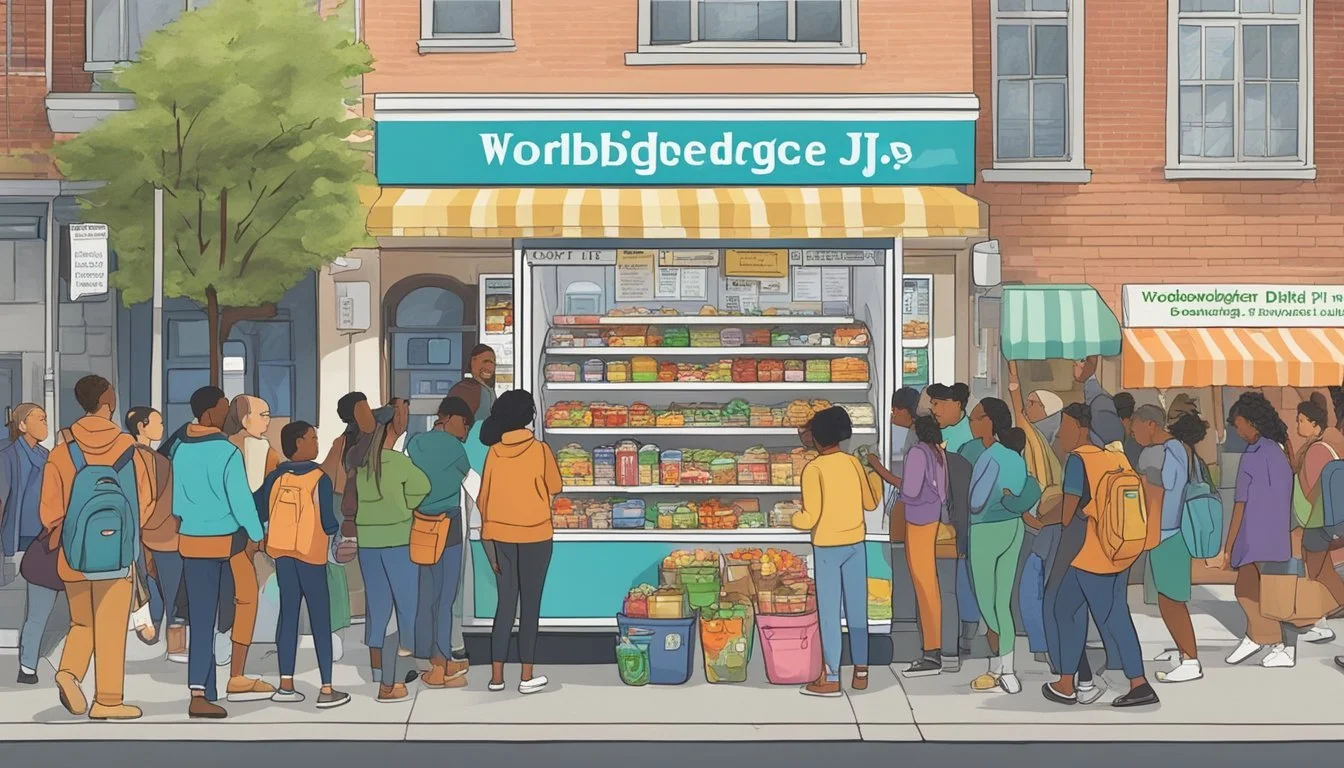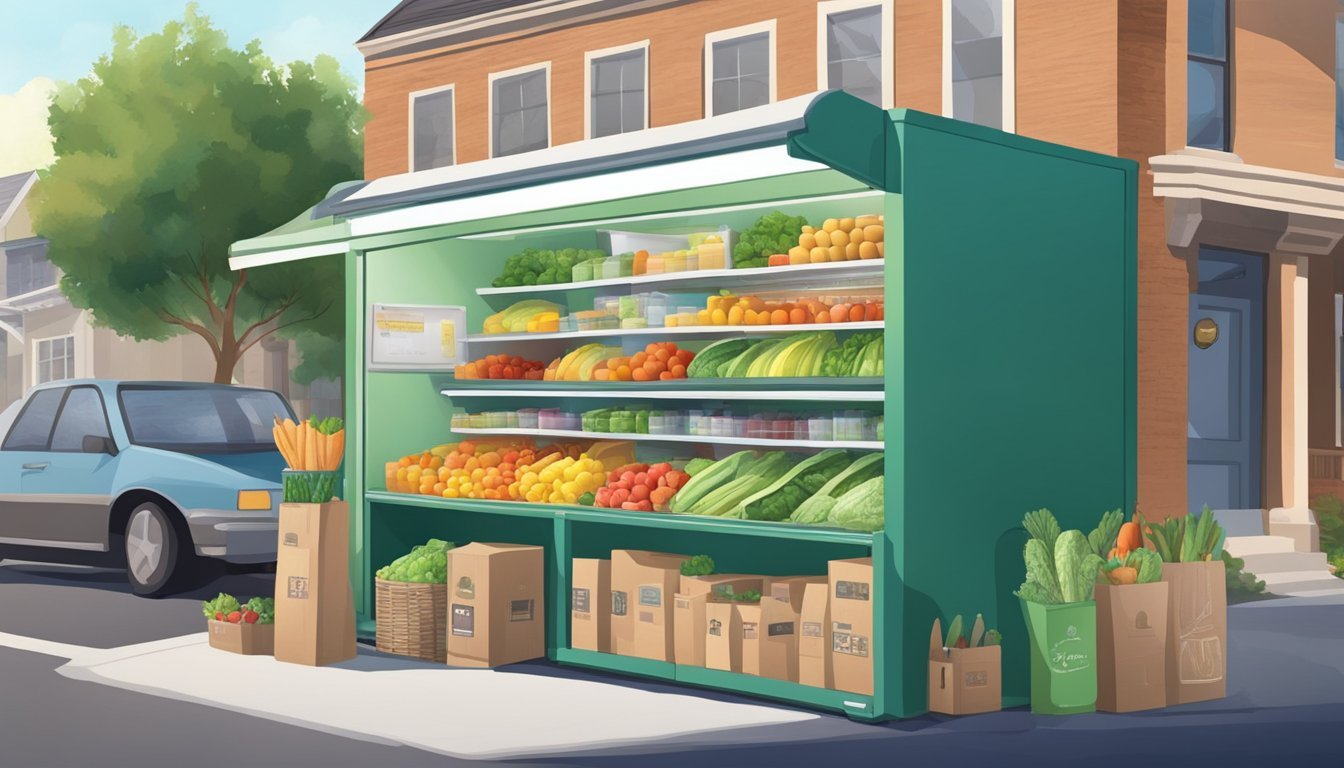Woodbridge, NJ Community Fridge
Addressing Food Insecurity with Compassion
In Woodbridge, New Jersey, a movement towards addressing food insecurity and waste reduction has culminated in the establishment of a community fridge. This initiative reflects a growing trend in urban areas where communal resources are deployed to support residents in need. The Woodbridge community fridge operates on a simple premise: take what you need and leave what you can. As a hub for food sharing, it allows individuals and businesses to contribute perishable and nonperishable food items, offering a free and accessible source of food to those who face the challenge of securing their next meal.
The success of the community fridge in Woodbridge is a testament to the collaborative spirit of its residents and local organizations. Positioned in strategic, accessible locations, these fridges are maintained by a network of volunteers who ensure that the food remains safe to eat and that the space stays clean and welcoming. The community fridge serves as a beacon of community support, reducing food waste by redistributing excess food that might otherwise be thrown away.
With the goal of fostering an environment of sharing and caring, the Woodbridge community fridge extends beyond mere sustenance; it strengthens community bonds and promotes a culture of mutual aid. In a world where many struggle with food insecurity, this initiative stands out as a practical solution that is easily replicated, encouraging other communities to adopt similar strategies in the fight against hunger.
Understanding Community Fridges
Community fridges serve as a grassroots solution to food insecurity by providing free fresh food through mutual aid. They are set up in accessible locations, offering a direct way to help communities.
Concept and Purpose
The idea behind community fridges is simple: they are public refrigerators where individuals and businesses can leave food, and those in need can take it. These fridges operate on the principle of mutual aid—a voluntary reciprocal exchange of resources for mutual benefit. They aim to address food insecurity by allowing easy access to fresh food.
History and Global Spread
Initially, community fridges began popping up in response to growing awareness of food wastage and food insecurity. Since March 2020, the number of community fridges in the United States grew significantly—from just a handful to over 160 across 28 states. They are now a global phenomenon, with fridges available in various countries around the world.
Benefits of Community Fridges
Community fridges offer concrete benefits. They:
Reduce food waste by providing a place where surplus food can be shared instead of thrown away.
Increase access to fresh and nutritious food, improving community health.
Promote a sense of community and solidarity, as people from all walks of life contribute to and benefit from the fridge.
Through these benefits, community fridges not only address immediate needs but also foster a spirit of cooperation and collective wellbeing.
Woodbridge Community Fridge Project
The Woodbridge Community Fridge Project represents a communal effort in Woodbridge, NJ, addressing food insecurity through mutual aid and volunteer work. Below are insights into its foundation, location, and community contributions.
Founding of the Woodbridge Fridge
The inception of the Woodbridge Community Fridge was catalyzed by local leaders recognizing the need for increased food access. Volunteers and community organizations have collaborated with the Maplewood Community Services Department to set up and maintain this mutual aid resource.
Location and Accessibility
Located strategically within Woodbridge, the community fridge is positioned to be easily accessible. Details regarding the fridge’s exact location and operating hours are maintained by the Maplewood Community Services Department, ensuring accessibility for all individuals in need.
Community Impact
The establishment of the community fridge in Woodbridge, NJ, under the guidance of figures like Mayor Dean Dafis, has substantially bolstered local efforts to combat hunger. It serves as a testament to the town's commitment to providing mutual aid and fostering a supportive environment for its residents. Volunteer engagement continues to play a crucial role in the project's ongoing success and resilience.
How to Contribute
Contributing to the Woodbridge, NJ Community Fridge is an impactful way to support those in need within the community. Whether through donations of fresh produce, coordinating food drives, or volunteering time, every effort helps to sustain and enhance the initiative.
Donating Fresh Produce
Individuals can contribute to the community fridge by donating fresh produce. It is essential to ensure that the fruits and vegetables are fresh and safe to consume. Donors are encouraged to provide a variety of produce to cater to different nutritional needs and preferences.
Accepted Items: Fresh fruits, vegetables, and herbs.
Condition: Must be fresh, not overripe or spoiled.
Drop-off: During specific hours or by arrangement.
Coordinating Food Drives
Organizing a food drive is a significant way to collect food donations. Businesses, schools, and local organizations can partake in planning these events. Essential considerations include:
Planning: Obtain approval, set dates, and promote the event.
Collection: Set up collection points to gather non-perishable food items.
Delivery: Coordinate with the community fridge volunteers for delivery.
Volunteer Opportunities
Volunteers are the backbone of the Woodbridge Community Fridge. They handle various tasks, from stocking to maintaining the space, and there are numerous ways to get involved:
Food Sorting: Ensuring the quality and safety of donated items.
Maintenance: Keeping the fridge clean and organized.
Outreach: Spreading awareness and encouraging community participation.
Safety and Maintenance
Maintaining community fridges in Woodbridge, NJ involves adhering to strict health guidelines and ensuring regular cleaning and upkeep. These efforts promote the safe distribution of fresh food and align with the health department's standards.
Health Guidelines
The Woodbridge Health Department enforces specific health regulations to ensure that the community fridges operate safely. All perishable items, like fruits, vegetables, and dairy products, must be stored at appropriate temperatures to prevent spoilage and the growth of harmful bacteria. The community fridges are frequently inspected, and volunteers are educated on safe handling practices. The fridge locations are often listed on a map, making it simpler for government health officials to perform routine checks.
Cleaning and Upkeep
Regular cleaning is vital to the ongoing functionality of community fridges. Volunteers follow a defined schedule for:
Interior Cleaning:
Shelves and surfaces are wiped down with food-safe disinfectants.
Spills are promptly addressed to prevent contamination.
Exterior Maintenance:
The fridge's exterior, including handles and doors, is sanitized to limit the spread of germs.
Upkeep involves:
Checking the fridge's temperature settings regularly.
Reporting and addressing technical issues promptly to avoid food spoilage.
Organizing food items to ensure that the oldest items are used first – a practice known as FIFO (First In, First Out).
Through consistent health and safety practices, community fridges in Woodbridge ensure the well-being of their users and the longevity of the service they provide.
Community Involvement and Support
The Woodbridge, NJ Community Fridge initiative thrives through extensive local participation and backing. Central to this collaboration are local business partnerships, support from government and non-profit entities, and public awareness campaigns.
Local Business Partnerships
Several local businesses in Woodbridge have established partnerships with the community fridge project, providing essential resources and donations. Wegmans, a regional supermarket chain, demonstrates its commitment by offering fresh food supplies, enabling residents to access nutritious options. Kiwanis, a global community service organization, has also played a pivotal role by mobilizing volunteers and coordinating with the Salt Foundation to manage the logistical aspects of food collection and distribution.
Government and Non-Profit Support
The involvement of government agencies and non-profit organizations is crucial for the expansion and sustainability of the community fridge. By facilitating Freedge, an online platform, they provide a map that helps to locate community fridges, including the one in Woodbridge. Moreover, these entities assist in navigating regulations and securing funding, ensuring that initiatives like the Jersey City Heights Community Fridge continue to serve communities effectively.
Public Awareness Campaigns
To maximize the reach and impact, public awareness campaigns are orchestrated across various platforms. The campaigns employ social media, flyers, and community events in Woodbridge and neighboring areas, such as Maplewood and New York City. The objective is to inform the community about how they can contribute or benefit from the fridge, thereby fostering a cycle of giving and receiving within the community.
Navigating Challenges
The initiative taken by Woodbridge in addressing food insecurity illustrates the community's resilience. However, the path is not without its obstacles, notably those intensified by the pandemic and acts of vandalism and theft.
Addressing Food Insecurity During the Pandemic
The coronavirus pandemic exacerbated food insecurity issues on a global scale, and Woodbridge was no exception. Community fridges emerged as a practical response, providing accessible food sources to those in need. The Township of Woodbridge had to adapt quickly to ensure safe and continuous operations of these fridges during the pandemic. Protocols for sanitization and social distancing became crucial in maintaining the safety of both volunteers and beneficiaries.
Database tracking played a significant role in logistics. Records of stocked items ensured that the supply could meet the heightened demand, a challenge intensified by COVID-19. Tracking also allowed for monitoring the use of fridges, making sure that resources were appropriately distributed across the community.
Dealing with Vandalism and Theft
Vandalism and theft are unfortunate realities that community fridge initiatives face. Woodbridge's approach to mitigating these challenges involved both structural and community-based strategies:
Robust Structures: Industrial-grade locks and sturdy construction deter potential vandalism and theft.
Community Watch: Local residents and volunteers keep an informal watch, reporting any suspicious activities.
By strengthening physical security and fostering a community culture of shared guardianship, Woodbridge enhances the resilience of its community fridge endeavor against these anti-social acts.
Additional Resources
This section provides key information and materials for those interested in learning more about community fridges, locating them, or starting one in their area. The resources have been categorized for ease of access.
Informative Articles and Books
Community fridges have been featured in numerous articles that shed light on their impact, functionality, and significance in food sharing and waste reduction. One may find a wealth of information in the works of Sarah Legler, who has been instrumental in the community fridge movement. Readers seeking comprehensive guides are encouraged to explore books on planning and operating community fridges, which include topics from engaging the community to maintaining the fridge.
Community Fridge Map and List
Those looking for a nearby fridge can utilize the Community Fridge Map, a database showcasing the locations of fridges across multiple areas. For residents of Woodbridge, NJ, a list of local community fridges can be a valuable tool in finding food resources or places to donate:
Community Fridge Location Address Contact Information Woodbridge Community Fridge TBD Woodbridge Area TBD Contact Details
Please note that the above table will be updated with specific details as they become available.
How to Start Your Own Fridge
For individuals inspired to establish a community fridge, detailed planning materials are available. These include step-by-step guides, forms for obtaining permissions, and suggestions for collaborations with local arts and civic groups to make the fridge a community emblem. Essential planning resources can help potential organizers understand the logistics and legal considerations of starting a community fridge.








